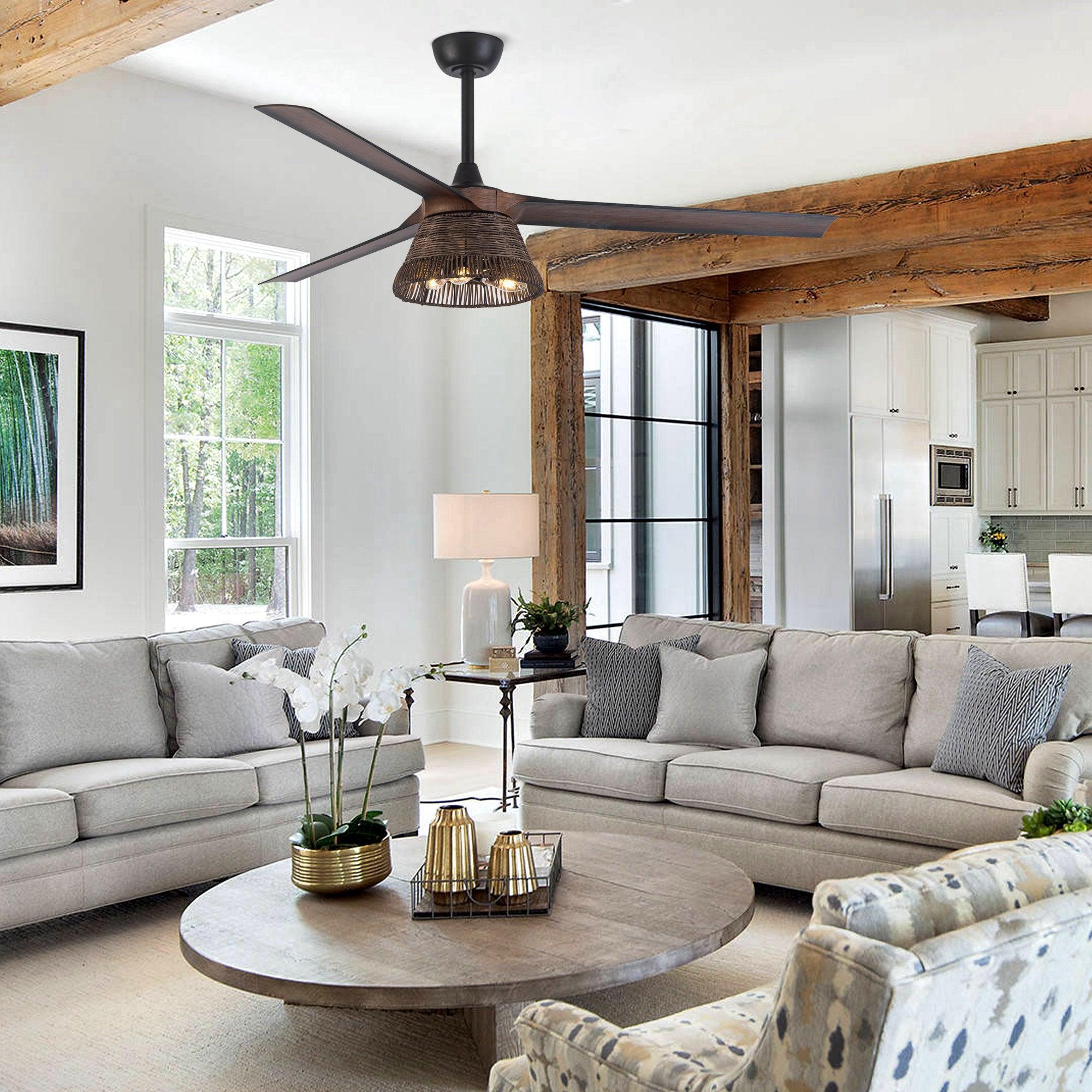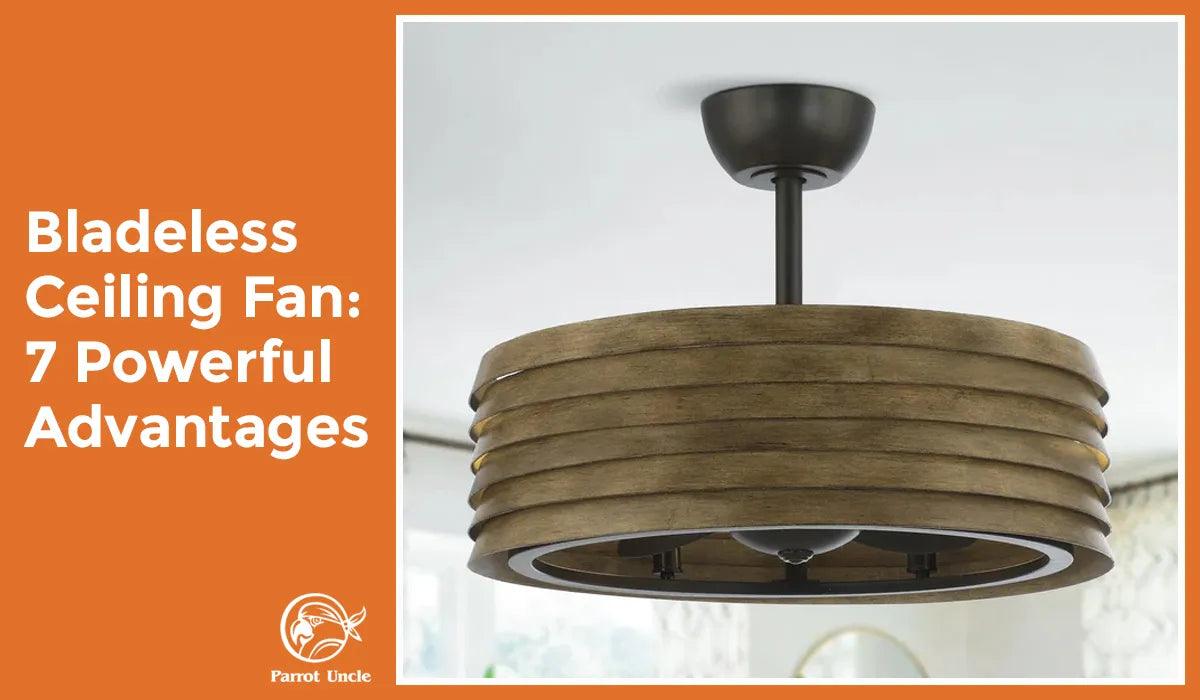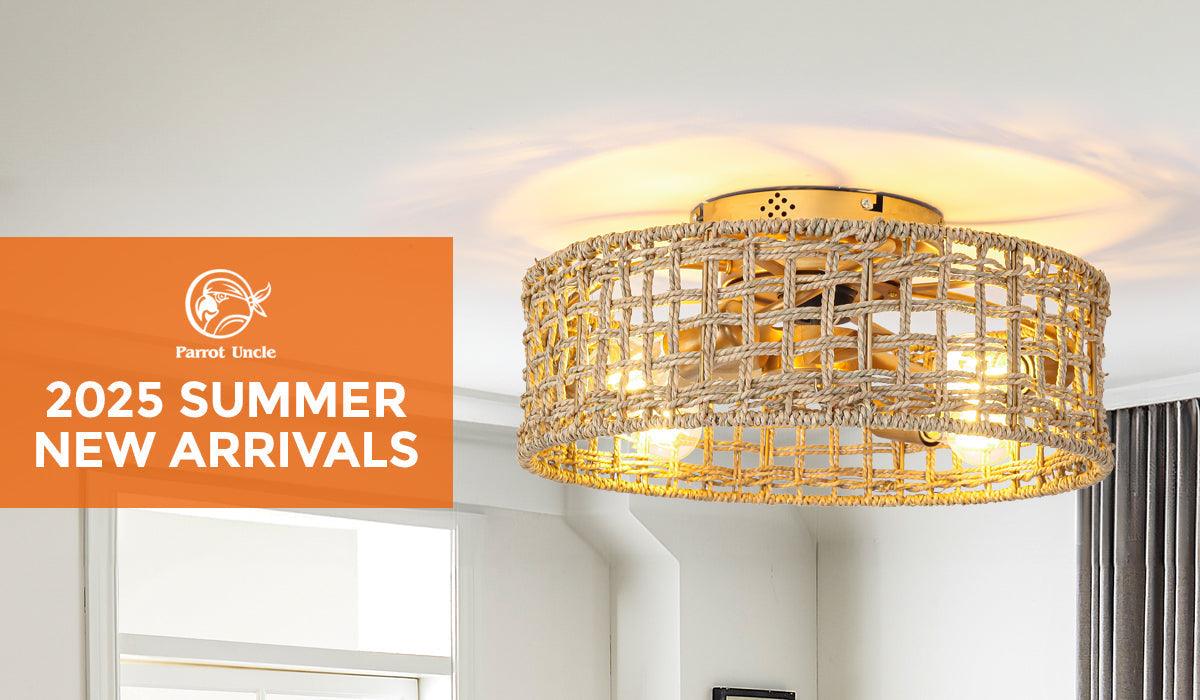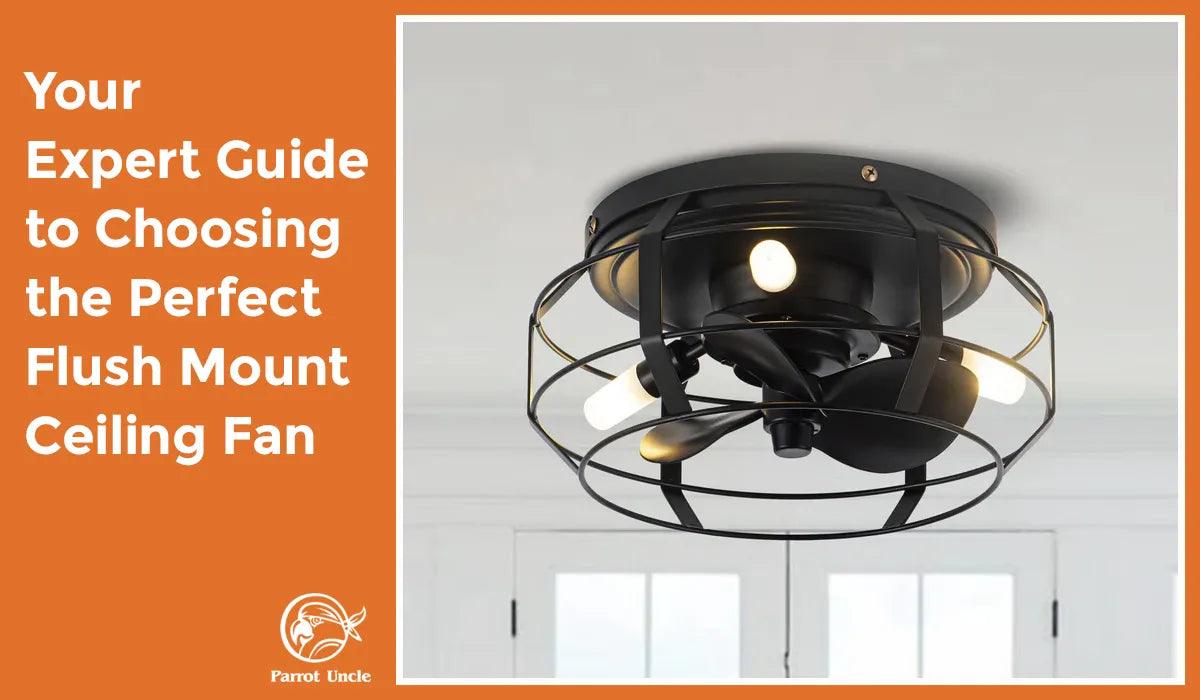Bladeless ceiling fans are gaining immense popularity. Are you tired of dusty blades, noisy operation, and outdated designs? Then, you are not alone! The quest for a sleeker, safer, and more efficient cooling solution has led many homeowners and businesses to explore bladeless ceiling fans. But are they truly superior to traditional bladed fans? This article delves deep into the world of bladeless ceiling fans, comparing their advantages against traditional models, exploring their functionalities, and predicting their future in 2025.
Why Bladeless Ceiling Fans Are Gaining Traction: Understanding Your Needs
Before diving into the technical details, let's address the core reasons behind the rising interest in bladeless technology. What are your motivations for considering a change? Are you primarily concerned with:
- Aesthetics: Do you desire a modern, minimalist look that complements your interior design?
- Safety: Are you worried about the potential hazards of rotating blades, especially with children or pets around?
- Efficiency: Are you looking for ways to reduce your energy consumption and lower your electricity bills?
- Maintenance: Are you tired of constantly cleaning dust off traditional fan blades?
- Noise: Are you sensitive to the whirring sound produced by conventional fans?
These questions are central to understanding whether a bladeless ceiling fan is the right choice for you. Many people are also looking for innovative features, like smart home integration and customizable airflow, which bladeless fans often offer. According to a recent report by Global Market Insights, the ceiling fan market is expected to reach $10 billion by 2025, with a significant portion of that growth driven by the increasing demand for energy-efficient and aesthetically pleasing bladeless models.
What Exactly Is a Bladeless Ceiling Fan?
The term "bladeless" can be misleading. These fans do have blades, but they're concealed within the base of the unit. Typically, an electric motor drives a turbine or impeller to draw air in, which is then forced through an annular aperture (a circular slot). This creates a smooth, consistent airflow without visible rotating blades. This technology is often based on the Coanda effect, which causes a jet of fluid (in this case, air) to attach to a nearby surface.
7 Powerful Advantages of Bladeless Ceiling Fans
Let's explore the key advantages that make bladeless ceiling fans a compelling alternative to traditional models:
- Enhanced Safety: The absence of exposed rotating blades significantly reduces the risk of injury, making them ideal for homes with children and pets.
- Modern Aesthetics: Bladeless fans often boast sleek, minimalist designs that complement contemporary interiors. They are available in a variety of finishes and styles, allowing you to seamlessly integrate them into your existing decor.
- Easier Cleaning: Without blades to collect dust, cleaning a bladeless fan is significantly easier and faster. A quick wipe with a damp cloth is usually all that's needed.
- Quieter Operation: Many bladeless fans operate more quietly than traditional fans, especially at lower speeds. This makes them ideal for bedrooms and living rooms where noise is a concern.
- Improved Airflow Distribution: While airflow perception can be subjective, high-quality bladeless fans often provide a more consistent and even distribution of air throughout the room. Some models can even be programmed to direct airflow in specific directions.
- Advanced Features: Many bladeless fans come equipped with smart home integration, allowing you to control them with your smartphone or voice assistants. They may also offer features like adjustable speed settings, timers, and even built-in air purifiers.
- Increased Energy Efficiency: While not always the case, some bladeless fans are designed to be more energy-efficient than traditional models, potentially saving you money on your electricity bills. This efficiency often comes from the improved motor technology and optimized airflow design.
Bladeless Ceiling Fan VS Traditional Fan: A Detailed Comparison
To provide a clearer picture, let's compare bladeless and traditional ceiling fans across several key criteria:
Table 1: Bladeless vs. Traditional Ceiling Fans
| Feature | Bladeless Ceiling Fan | Traditional Ceiling Fan |
|---|---|---|
| Safety | Safer, no exposed blades | Potential hazard, especially for children and pets |
| Aesthetics | Modern, minimalist | Traditional, various styles available |
| Cleaning | Easier, requires less frequent cleaning | More difficult, dust accumulates on blades |
| Noise Level | Generally quieter, especially at lower speeds | Can be noisy, especially at higher speeds |
| Airflow | Consistent, even distribution | Can be uneven, dependent on blade design and speed |
| Features | Smart home integration, adjustable settings, air purifier | Basic speed settings, limited features |
| Energy Efficiency | Potentially more efficient, depends on the model | Varies, can be less efficient than some bladeless models |
| Price | Generally more expensive | Generally less expensive |
| Installation | Can be more complex | Typically straightforward |
Pain Points and Motivations: Addressing Your Concerns
The decision to switch to a bladeless ceiling fan often stems from specific pain points experienced with traditional fans. These might include:
- Dust Accumulation: The constant need to clean blades is a common frustration.
- Noise Disturbance: The whirring sound can be disruptive, especially in quiet environments.
- Aesthetic Incompatibility: Traditional fans may not align with modern or minimalist interior designs.
- Safety Concerns: The risk of injury from rotating blades is a valid concern, particularly for families with young children or pets.
Your motivations for considering a bladeless fan likely center around addressing these pain points and achieving a more desirable outcome: a cleaner, quieter, safer, and more aesthetically pleasing cooling solution.
Market Insights: The Growing Demand
The bladeless fan market is experiencing significant growth, driven by increasing consumer awareness of the benefits they offer. According to a report by Research and Markets, the global bladeless fan market is projected to grow at a CAGR of over 6% during the period 2023-2028. This growth is fueled by factors such as:
- Rising disposable incomes: Consumers are more willing to invest in premium appliances that offer improved performance and aesthetics.
- Increasing awareness of energy efficiency: Consumers are actively seeking ways to reduce their energy consumption and lower their electricity bills.
- Growing adoption of smart home technology: The increasing popularity of smart homes is driving demand for appliances that can be integrated into these systems.
- Rising concerns about indoor air quality: Consumers are becoming increasingly aware of the importance of clean air and are seeking products that can help improve indoor air quality.
Bladeless Fan Market Share (%) by Region (2021-2033)
Effective Strategies for Choosing the Right Bladeless Ceiling Fan
Selecting the right bladeless ceiling fan requires careful consideration of several factors:
- Room Size: Choose a fan that is appropriately sized for the room. Larger rooms require fans with a higher airflow capacity.
- Ceiling Height: Ensure that the fan is installed at a safe and comfortable distance from the floor. Low ceilings may require a flush-mount model.
- Features: Consider the features that are most important to you, such as smart home integration, adjustable speed settings, and built-in air purifiers.
- Noise Level: Read reviews and check the manufacturer's specifications to ensure that the fan operates at a comfortable noise level.
- Energy Efficiency: Look for fans with a high Energy Star rating to minimize energy consumption.
- Budget: Bladeless fans can range in price from a few hundred dollars to several thousand dollars. Set a budget and stick to it.
- Warranty: Choose a fan with a comprehensive warranty to protect your investment.
- Airflow Power Consideration: Airflow is king! Review the specifications regarding Cubic Feet per Minute (CFM).
Tips and Tricks for Optimal Performance
- Proper Installation: Ensure that the fan is installed correctly by a qualified electrician.
- Regular Cleaning: Wipe down the fan regularly to remove dust and debris.
- Optimal Speed Settings: Adjust the speed settings to achieve the desired level of airflow.
- Smart Home Integration: Connect the fan to your smart home system for convenient control.
- Utilize Timer Functionality: Leverage the timer settings to automatically turn the fan on and off at specific times.
Common Mistakes to Avoid
- Choosing the Wrong Size: Selecting a fan that is too small for the room will result in inadequate airflow.
- Ignoring Ceiling Height: Installing a fan too close to the floor can be dangerous and uncomfortable.
- Overlooking Noise Levels: Purchasing a fan that is too noisy can be disruptive.
- Neglecting Energy Efficiency: Choosing a fan with a low Energy Star rating can result in higher energy bills.
- Improper Installation: Incorrectly installing the fan can lead to performance issues and safety hazards.
How to: Step-by-Step Approach to Installation (General Guide)
Disclaimer: Always consult the manufacturer's instructions and hire a qualified electrician for installation. This is a general guide only.
- Safety First: Turn off the power to the circuit breaker.
- Remove Old Fixture: Carefully remove the existing ceiling fixture.
- Install Mounting Bracket: Secure the mounting bracket to the ceiling joist, ensuring it is properly aligned.
- Connect Wiring: Connect the fan's wiring to the house wiring, following the manufacturer's instructions and using wire connectors.
- Mount the Fan Body: Attach the fan body to the mounting bracket.
- Assemble Components: Assemble any remaining components, such as the light kit (if applicable).
- Test the Fan: Turn on the power and test the fan's functionality, including the speed settings and light.
Why It Matters: The Benefits in Detail
The shift to bladeless technology matters because it addresses several key concerns:
- Improved Safety: Reduces the risk of injury, especially for vulnerable populations.
- Enhanced Comfort: Provides a more consistent and comfortable airflow.
- Greater Convenience: Simplifies cleaning and maintenance.
- Modern Aesthetics: Complements contemporary interior designs.
- Increased Energy Savings: Potentially lowers energy bills.
The benefits extend beyond individual homeowners, impacting the broader market and contributing to a more sustainable and efficient future.
Current Status and What We Can Do
Currently, bladeless ceiling fans represent a growing segment of the overall ceiling fan market. While still more expensive than traditional fans, prices are becoming more competitive as technology improves and production scales up. We can contribute to the continued growth and improvement of this technology by:
- Supporting Innovation: Choosing bladeless fans encourages manufacturers to invest in research and development, leading to even more efficient and feature-rich products.
- Educating Others: Sharing information about the benefits of bladeless fans can help to increase awareness and adoption.
- Demanding High Standards: Pressuring manufacturers to prioritize energy efficiency, safety, and durability will drive improvements in product quality.
- Advocating for Standards: Supporting the development of industry standards for bladeless fan performance and safety.
Future Trends and How to Improve
The future of bladeless ceiling fans looks promising. We can expect to see:
- Further advancements in energy efficiency: New motor technologies and improved airflow designs will continue to reduce energy consumption.
- Increased integration with smart home systems: Bladeless fans will become even more seamlessly integrated into smart home ecosystems, offering greater control and automation.
- New features and functionalities: We can anticipate the development of new features, such as air purification, aromatherapy diffusion, and even personalized airflow control.
- Lower prices: As production scales up and technology matures, prices will become more competitive, making bladeless fans accessible to a wider range of consumers.
AirSculpting: Looking ahead, the idea of "AirSculpting" presents an exciting prospect. Imagine bladeless fans capable of creating customized airflow patterns within a room, directing cool air to specific areas or even creating gentle breezes that mimic natural wind. This level of control could revolutionize indoor comfort and energy efficiency.
Case Detail to Compare: A Real-World Example
Let's consider a hypothetical case study:
Scenario: Two identical bedrooms, each measuring 12ft x 12ft, are being renovated. One bedroom is fitted with a traditional ceiling fan with a 52-inch blade span, costing $150 and consuming 75 watts at high speed. The other bedroom is equipped with a bladeless ceiling fan costing $400 and consuming 50 watts at high speed.
Analysis: While the bladeless fan has a higher upfront cost, it offers potential long-term savings due to its lower energy consumption. Assuming the fans are used for 4 hours per day, the traditional fan would consume approximately 109.5 kWh per year, while the bladeless fan would consume 73 kWh per year. At an electricity rate of $0.15 per kWh, the annual energy cost for the traditional fan would be $16.43, compared to $10.95 for the bladeless fan. Over a period of 5 years, the bladeless fan would save approximately $27.40 in energy costs, partially offsetting the higher initial investment. Furthermore, the enhanced safety, easier cleaning, and quieter operation of the bladeless fan provide additional value.
This example highlights the importance of considering both the initial cost and the long-term operating costs when choosing between bladeless and traditional ceiling fans.
Highlights and How to Stand Out
Bladeless ceiling fans stand out due to their:
- Unique Design: Offers a modern and sophisticated aesthetic.
- Enhanced Safety: Eliminates the risk of injury from exposed blades.
- Improved Functionality: Often comes with advanced features such as smart home integration and air purification.
To further enhance their appeal, manufacturers can focus on:
- Improving Airflow Performance: Continuously refining the airflow design to maximize cooling efficiency.
- Reducing Noise Levels: Developing quieter motor technologies to minimize noise disturbance.
- Expanding Feature Sets: Incorporating new features such as aromatherapy diffusion and personalized airflow control.
- Lowering Prices: Making bladeless fans more accessible to a wider range of consumers.
- Increase the availability of diverse color options.
FAQs: Addressing Common Questions
- Are bladeless ceiling fans really "bladeless?" No, they have blades inside, but they are not exposed.
- Are they as effective as traditional fans? High-quality models can be just as effective, if not more so, in distributing air evenly.
- Are they more expensive? Yes, typically they have a higher upfront cost.
- Are they difficult to install? Some models can be more complex, so professional installation is often recommended.
- Are they noisy? Generally quieter than traditional fans, especially at lower speeds.
- Are they energy-efficient? Many models are designed to be more energy-efficient.
- Do they require special cleaning? Easier to clean than traditional fans due to the lack of exposed blades.
- What is the lifespan of a bladeless ceiling fan? The lifespan of a bladeless ceiling fan is generally comparable to that of a traditional ceiling fan, typically ranging from 10 to 15 years with proper maintenance.
Reviews: Real User Experiences
Review 1: Sarah M. - 5 Stars
"I absolutely love my bladeless ceiling fan! It's so sleek and modern, and it really elevates the look of my living room. Plus, it's so much quieter than my old fan. Highly recommend!"
Review 2: John B. - 4 Stars
"The installation was a bit tricky, but once I got it up, it's been great. I feel much safer with this fan, especially with my kids running around. The airflow is good, and it looks fantastic."
Review 3: Emily L. - 5 Stars
"I was hesitant to spend the extra money on a bladeless fan, but it was worth it. The smart home integration is awesome, and I love that I can control it with my phone. Cleaning is a breeze too!"
Review 4: David K. - 3 Stars
"The fan looks great and is very quiet, but the airflow isn't quite as strong as my old fan. Still, I appreciate the safety aspect and the modern design."
Conclusion: Embracing the Future of Cooling
Bladeless ceiling fans offer a compelling alternative to traditional models, providing enhanced safety, modern aesthetics, and potentially improved energy efficiency. While they typically have a higher upfront cost, the long-term benefits and innovative features make them an attractive option for homeowners and businesses seeking a smarter, safer, and more stylish cooling solution. As technology continues to advance, we can expect to see even more innovative and efficient bladeless fans emerge, further solidifying their position in the market.
Table 2: Top Bladeless Ceiling Fan Brands
| Brand | Highlights |
|---|---|
| Dyson | Known for high-quality airflow and air purification features |
| Oransi | Specializes in air purification and advanced filtration |
| Casa Vieja | Offers stylish designs and affordable options |
| Hunter | Known for reliability and durable construction |
Table 3: Common Bladeless Fan Issues and Solutions
| Issue | Solution |
|---|---|
| Weak Airflow | Check fan placement, ensure room size is appropriate for fan capacity. |
| Excessive Noise | Ensure fan is properly installed, lubricate moving parts. |
| Remote Not Working | Replace batteries, check remote sensor on fan. |
| Smart Home Integration | Reset connection, update firmware, check network compatibility. |
Table 4: Bladeless Fan Feature Checklist
| Feature | Importance | Notes |
|---|---|---|
| Safety | High | Essential for households with children and pets. |
| Airflow (CFM) | High | Determine CFM based on room size. |
| Noise Level (dB) | Medium | Consider acceptable noise levels for bedrooms vs. living areas. |
| Smart Home Control | Medium | Useful for convenience and remote operation. |
| Energy Efficiency | High | Look for Energy Star rating to save on electricity bills. |
| Design & Aesthetics | Medium | Match fan design to existing interior decor. |













